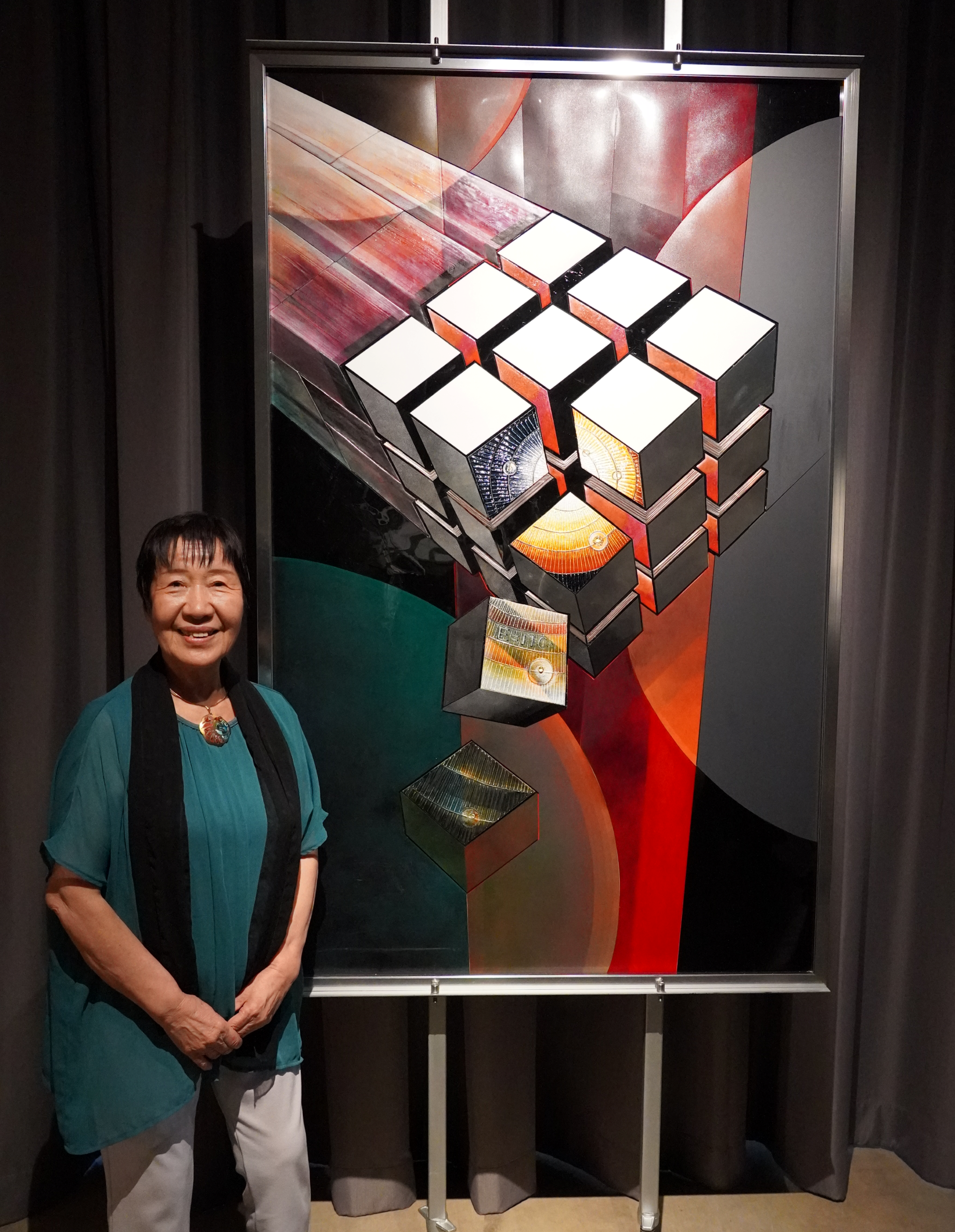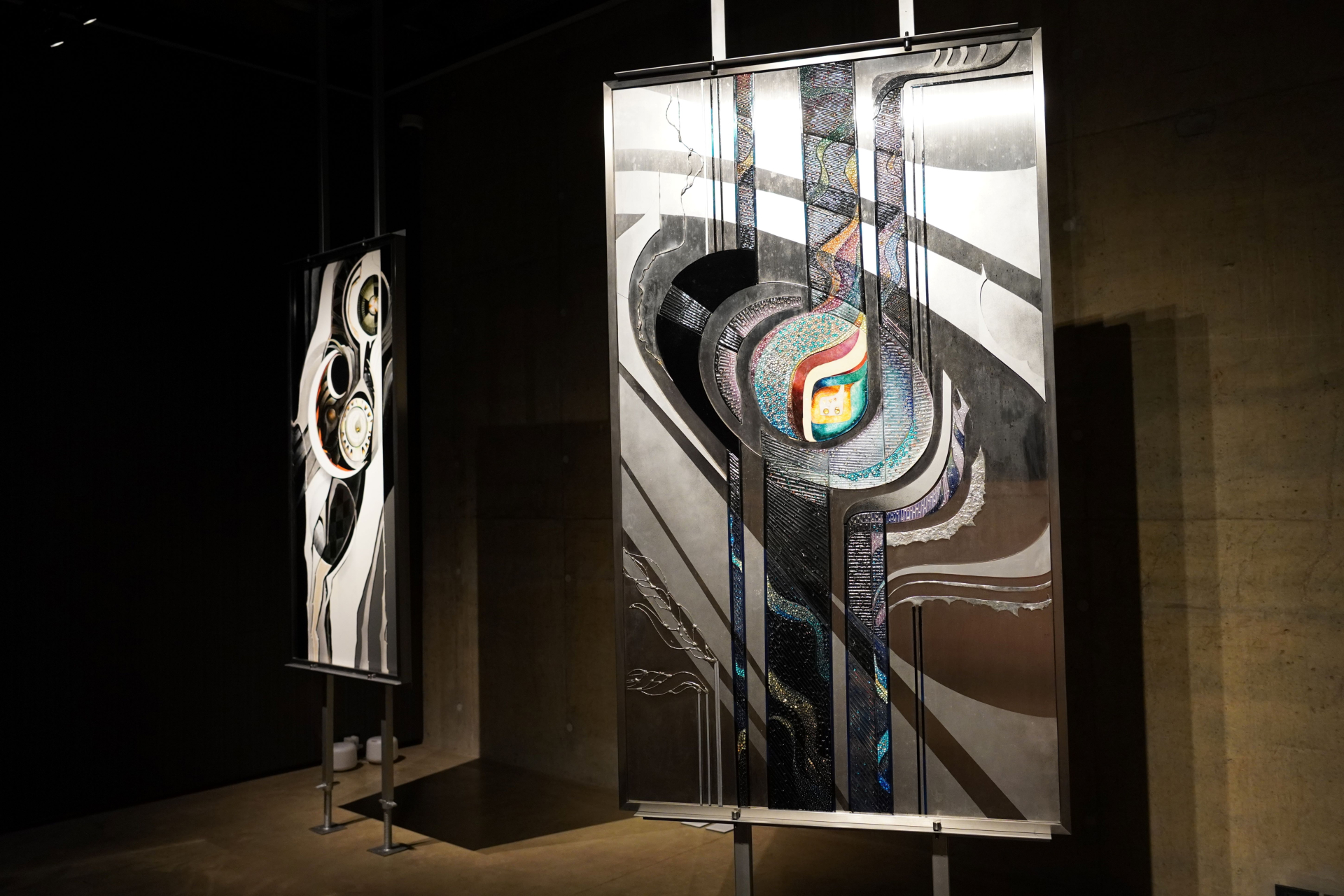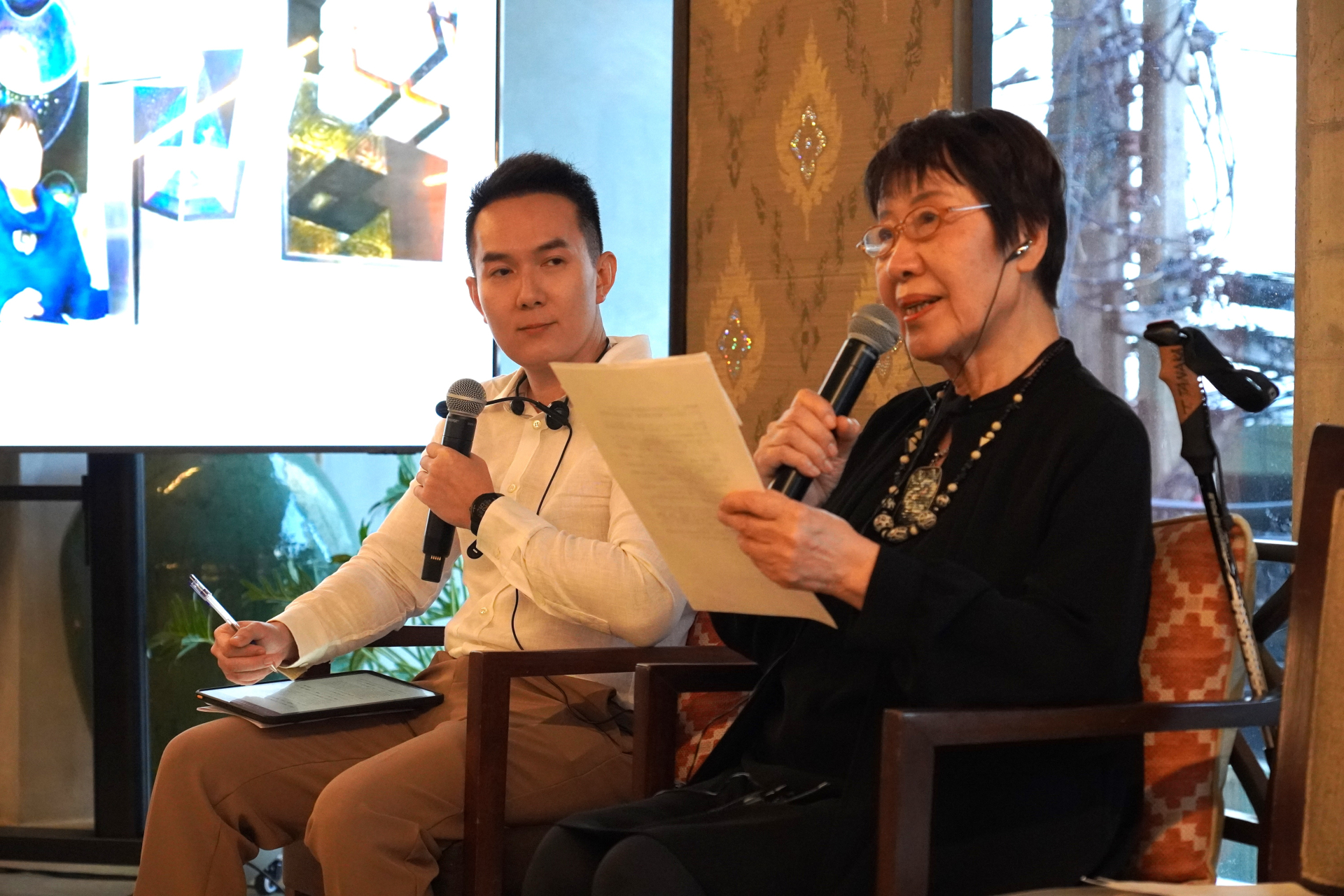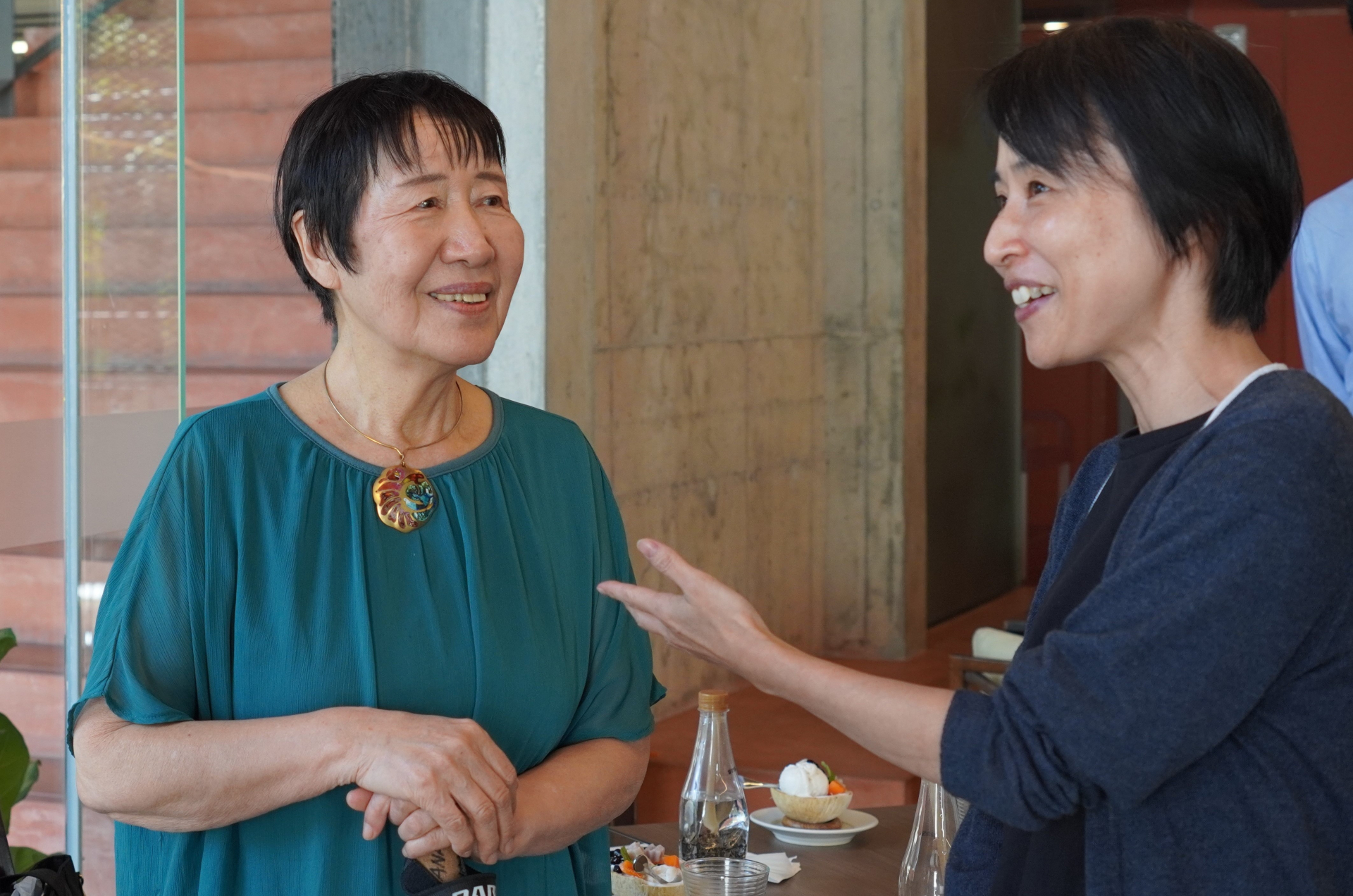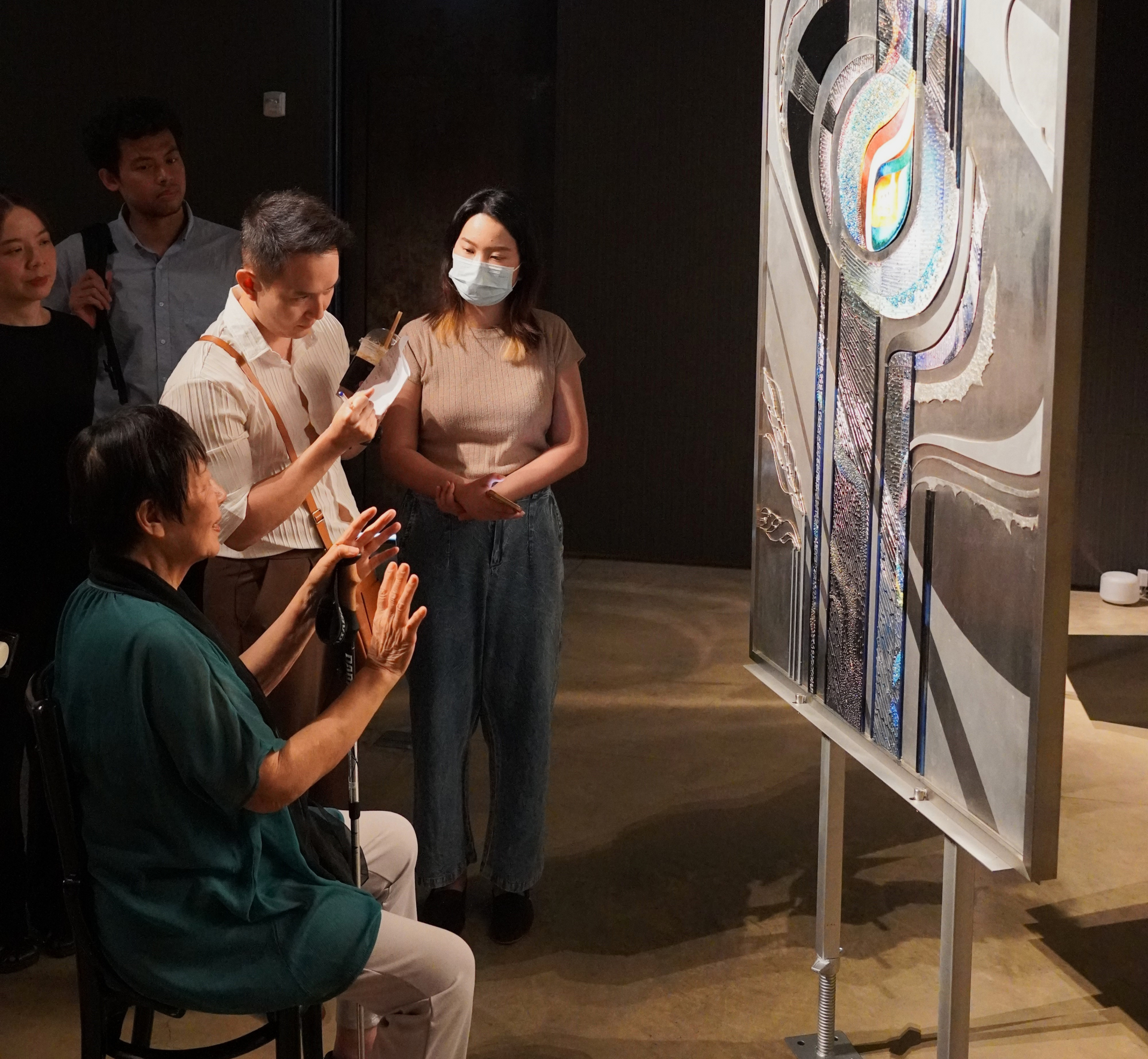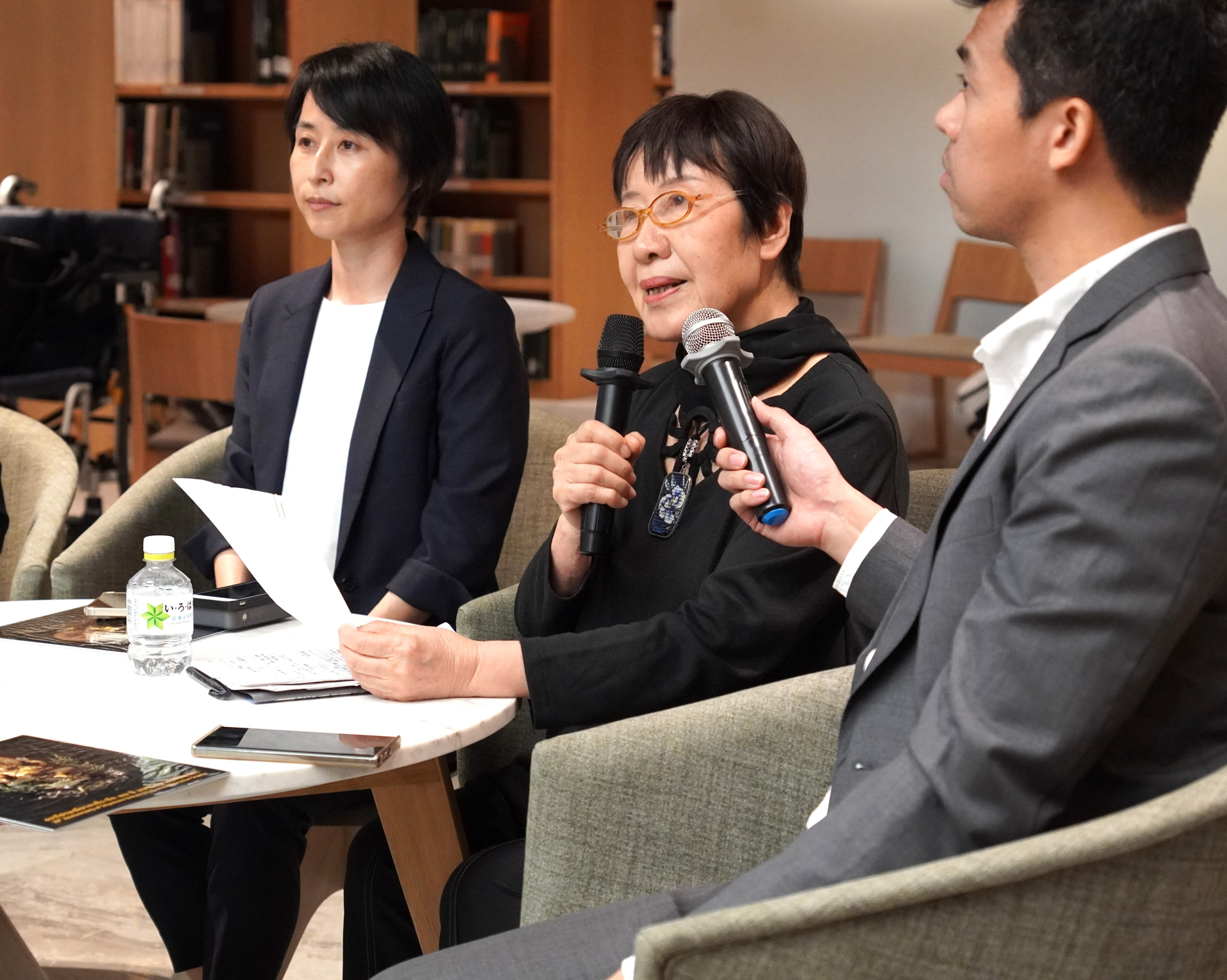We are here today for the art exhibition “Echoed Tranquility,” where you are showcasing three artworks and participating in a dialogue event. This is also your first time visiting Southeast Asia to share your experience as an A-bomb survivor and introduce your art. Could you tell us how you are feeling right now?
I’m very excited. Out of all places, I never thought that my work would be recognized in Southeast Asia. I am beyond grateful and am determined to do my best during my stay here.
I believe that there many challenges involved in carrying out this project, including transporting my paintings from Japan to Thailand. Although I don’t really have much to lose anymore, everyone is working extremely hard to protect the artwork, and this is a joy that I have never known before at the age of 85. I am incredibly grateful to the people at the Sasakawa Peace Foundation.
The main theme of this exhibition explores how the global community can realize a peaceful society without the use of force and violence. How does art function as an important tool for recovery from conflict?
It is difficult to give concrete example of how art can be useful for recovery from conflict, but we do use it in many different aspects. Soldiers sang war songs to give themselves strength and energy to march into war and sacrifice their lives. The opposite is also true in the sense that the Bells of Nagasaki were built to comfort people’s hearts after the war. These art forms of songs and music were used both for war and recovery. It’s very inspiring. Art is an abstract tool has the power to move something inside of you.
Personally, there is no way I could directly express my experience within my art that easily, so instead I do it in a slightly evasive, abstract way with a symbol of some kind to convey my feelings. Until recently, I didn't know if that would accurately convey my message, but some of the trauma I felt subsided. The trauma I have experienced feels less heavy and it’s a form of consolation for myself. I continued to make more artworks because with each piece my heart feels lighter than before. It’s as if I am shedding old skin each time. I used to be very sensitive and sad when I was younger, but now I can say I have grown into a happier person.
